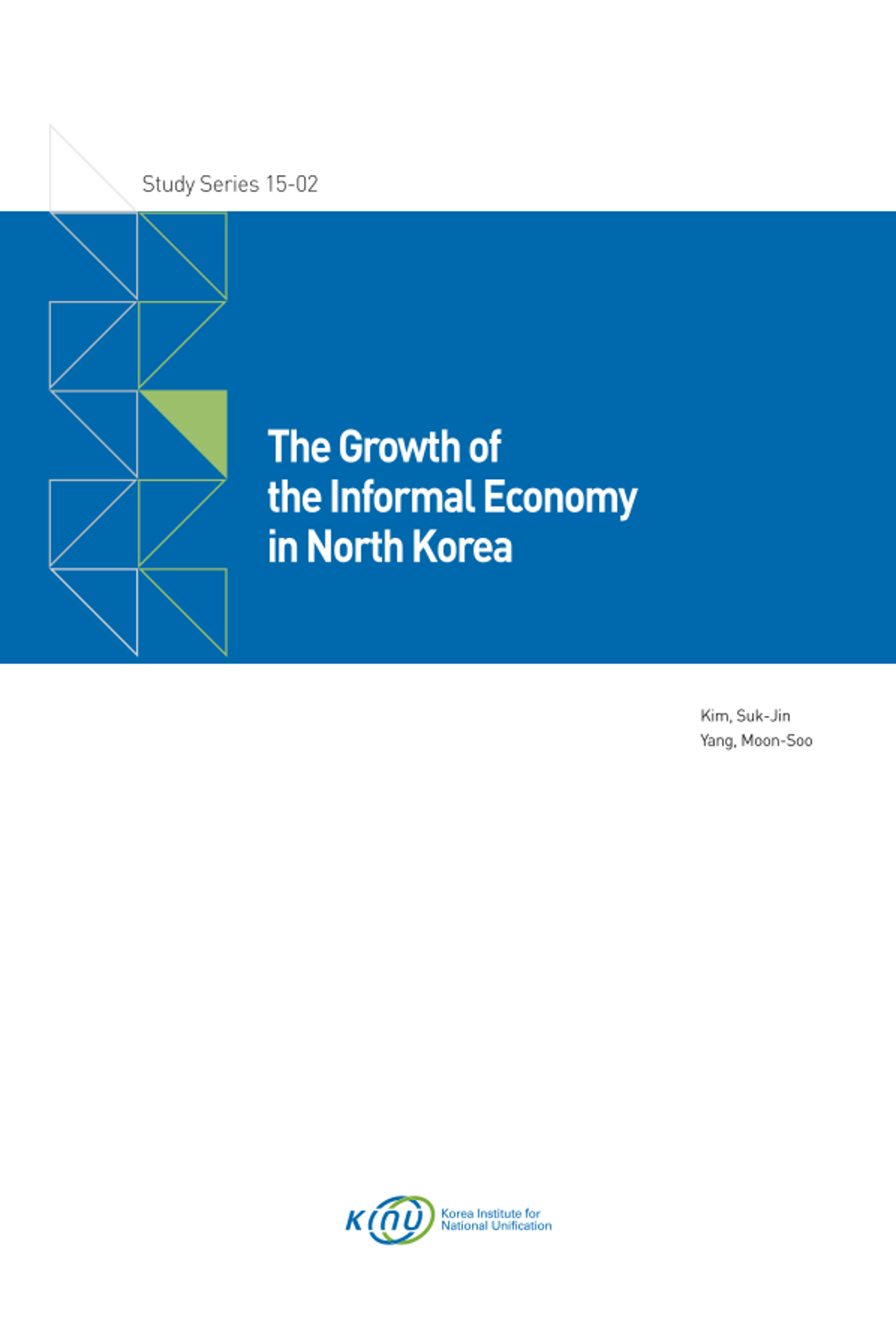
연구원발간물Study Series 2015-02
The Growth of the Informal Economy in North Korea
- 발행사항
- Seoul : Korea Institute for National Unification, 2015
- 형태사항
- 59 p. ; 23cm
- 총서사항
- Study Series
- ISBN
- 9788984798045
- 청구기호
- 000 SS15-02
- 키워드
- Informal, Economy, North Korea, Growth
소장정보
| 위치 | 등록번호 | 청구기호 / 출력 | 상태 | 반납예정일 |
|---|---|---|---|---|
이용 가능 (2) | ||||
| 1자료실 | G0015703 | 대출가능 | - | |
| 1자료실 | G0015704 | 대출가능 | - | |
이용 가능 (2)
- 등록번호
- G0015703
- 상태/반납예정일
- 대출가능
- -
- 위치/청구기호(출력)
- 1자료실
- 등록번호
- G0015704
- 상태/반납예정일
- 대출가능
- -
- 위치/청구기호(출력)
- 1자료실
책 소개
In the early 1990s, North Korea was in the midst of a severe economic crisis and the dominant view was that the collapse of the North Korean regime would happen in the foreseeable future. However, the same regime has remained in power for more than two decades, and to some extent, the economy has been improving for the last 15 years.
Two key drivers have contributed to the relative recovery of the North Korean economy. One is the expansion of foreign economic relations such as aid, trade, and investment, and the other is the growth of the informal economy. Between these two, the latter is especially remarkable in that it implies a fundamental change in the North Korean economic system.
Officially, North Korea runs a socialist planned economy, and in this sense, the informal economy here refers to the parts that fall outside of it, such as markets or private economic activities. Despite the expansion of the informal economy, it is still difficult to refer to North Korea’s economy as a capitalist market economy. Only when laws and institutions that guarantee private property, the freedom of economic activity, and the fulfillment of contracts are established, capitalist market economy will be embedded in North Korea. Present-day North Korea still lacks such legal and administrative frameworks.
Therefore North Korea’s markets and private economic activities are merely informal in character.
How did the informal economy―markets and the private sector―develop in the absence of legal and administrative frameworks to support it? Despite the fact that the informal economy has been the most actively researched and discussed topic in the field of North Korean economic studies for the past twenty years, previous studies have not yet provided any satisfactory answer to this question.
This study describes the growth of the informal economy in North Korea and explores the main factors that enabled such growth. Here, the paper focuses on the fact that the North Korean informal economy is similar to that of the other low-income developing countries. The basic driving forces that led growth of the North Korean informal economy were service-led growth and entrepreneurship. Additionally, the growth of the informal food sector, the expansion of foreign trade, and the development of transportation and communication all are thought to have been important factors as well.
This study focuses on theoretical arguments based on re-interpretation of existing data and information, rather than analysis of new ones. A persistent problem in the study of the North Korean economy is the shortage of substantive evidences. This study is no different, and thus cannot offer a precise and detailed analysis due to the lack of data. It merely gives a rough explanation based on circumstantial evidences.
The data and information used in the analysis are: the results of surveys done on North Korean defectors and interviews with them in previous studies; information from sources within North Korea, including information domestically reported through various forms of media; research by UN organizations and the North Korean authorities; and information published by the official North Korean media.
목차
1. Introduction
2. Informal Economy: Concept and Trends
A. The Concept of Informal Economy
B. Trends of the Informal Economy Worldwide
3. The Rise of the Informal Economy in North Korea
A. Development of Markets
B. The Rise of the Private Sector
4. Driving Forces of the Informal Economy in North Korea
A. Service-Led Growth
B. Emerging Entrepreneurship
5. Some Sector Studies
A. Informal Food Sector
B. Foreign Trade and Informal Economy
C. Development in Transportation and Communications and the Informal Economy
6. Conclusion

